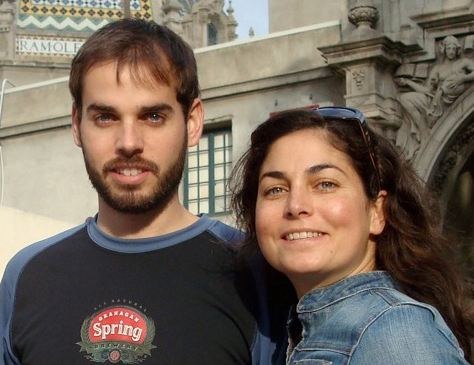
The Biggest Antigua Classic in Memory

© Latitude 38 Media, LLC
Ira Epstein — long of Bolinas, and more recently of St. Barth and the Robert Clark-designed 65-ft ketch Lone Fox — told us that he was happy to get back to the dock with nothing broken after each of the four races of last week’s 26th annual Antigua Classic Regatta.
"It was the roughest regatta I’ve ever sailed in," said Epstein, who was the overall winner of the previous two Classics and a veteran of five others. "Saturday had the nastiest weather, with winds in the mid-20s gusting to 30. But it wasn’t the wind so much as the seas, which were nine feet with just a seven-second period. Everybody got soaked, and my bowman was underwater the entire time."

©2013 Latitude 38 Media, LLC
Epstein’s evaluation of the conditions was conservative compared to that of some other very experienced skippers. "Man, it was ferocious out there!" said Scott DiBiaso, the much-respected captain of the 65-ft schooner Juno. "By Saturday there were seas 12 feet and higher, and one right after the other."
Big short-period seas are hard on all boats, but hardest on classic wooden yachts with wooden spars. Five spars in the record 65-boat fleet were lost on Saturday alone, and many were surprised there wasn’t more damage. Fortunately, there was only one main mast lost, that of the gorgeous 65-ft Blue Peter. Her mast split lengthwise and snapped horizontally. The cause of the dismasting was apparently a chainplate pulling out. If the dock talk is to be believed, all the other chainplates had recently been replaced on the 80-year-old boat.

©2013 Latitude 38 Media, LLC
The rough conditions had lots of other skippers fearing for their spars. DiBiaso said he’d never seen mighty Juno‘s wood bowsprit or masts bend so much. "We always push it, but we were pushing it twice as hard as in any previous regatta because we sailed neck-and-neck the entire time with the 75-ft schooner Adventuress, just out of a three-year refit. After four races and 100 miles of racing, often within a stone’s throw of each other, only 34 seconds separated us. Fortunately, 34 seconds in our favor."
But Juno‘s spars held. It’s a good thing, too, because it’s the end of her Caribbean season and she’s headed back to the Vineyard tomorrow. With any luck, she’ll be there in 10 to 12 days.

© Latitude 38 Media, LLC
This year’s overall winner in the Classic was the 94-ft Sumurun, built by Fife in 1914. "She was unbelieveable, as she didn’t reef the entire regatta, but stood straight up," said DiBiaso.
Unlike the America’s Cup, there is a second in the Classic, and it was claimed by Epstein’s Lone Fox. Actually, just about every boat gets one award or another.
Click here for details on this great event.
Two Siblings Survive Long Swim
Two siblings are lucky to be alive today after the charter boat they were on sank out from under them. San Franciscan Dan Suski, 30, and his Seattlite sister Kate, 39, had chartered a fishing boat off the north coast of St. Lucia last Sunday, and Dan was busily reeling in a big marlin when water apparently flooded the cabin and engine room. According to news reports quoting the pair, the captain threw them some PFDs and told them to jump overboard. Within a few minutes of entering the water, the boat was gone. They were eight miles from shore.

©2013 Latitude 38 Media, LLC
The captain had radioed for help before abandoning ship and implored everyone to stay together, but after about an hour of treading water, the Suskis were anxious to get moving. "[He] kept telling us to stay together; that help was on its way and we needed to wait," Kate Suski said. "I was saying, ‘Let’s swim, let’s swim. If they’re coming, they’ll find us. We can’t just stay here."
Against the captain’s recommendation, the Suskis started a long and arduous 14-hour swim for shore. At some point during the swim, they saw a plane and helo hovering near the area but they weren’t spotted. Miraculously, they made it to a spit of land and found help. The captain and mate were reportedly rescued after the owner of the charter company used the Suskis’ landing spot to get a line of bearing to track them down. The crew spent 23 hours in the water.
Strangers in the Night
"At about 2:45 a.m. on April 20, Bridget woke up hearing what she thought was someone on the foredeck," reports Bruce Eastman of the Brisbane-based Alberg 35 Sojourn. The boat was berthed at the small 20-slip San Blas Marina rather than anchoring in nearby Mantanchen Bay, where there have been thefts recently on cruising boats. "She got up and looked out the open companionway hatch to see someone standing in a boat, holding onto our boat near the outboard motor, which was locked to the pushpit."
Bruce jumped up and "let out a mighty war whoop" as he jumped into the cockpit with a machete. That was enough to send the would-be troublemakers back to shore. Bruce and Bridget had no luck contacting the marina’s security guard.
"The incident does not detract from the generally great time we’ve had cruising in Mexico this season, or sour us on the idea of returning next season. We have resolved, however, to prevent anyone from entering the cabin of the boat while we are sleeping by locking in one of the companionway hatch boards, locking the companionway slider, and locking the V-berth hatch only partially open, whether we are anchored out or in a marina. We will also keep our lantern, air horn, can of wasp spray and machete at the ready at the bottom of the companionway stairs."
